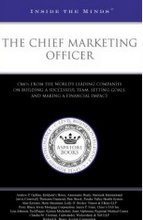 Doesn’t it seem as if the mortgage business is always in the news? Well, that’s because it is. After all, the industry is connected to interest rates, demography, real estate values, state and federal regulation, tax law, design trends and personal tastes, just to name a few.
Doesn’t it seem as if the mortgage business is always in the news? Well, that’s because it is. After all, the industry is connected to interest rates, demography, real estate values, state and federal regulation, tax law, design trends and personal tastes, just to name a few.But when the mortgage business hits the airwaves and really pings a nerve, it’s about reputation and trust issues. And lately there’s been a growing perception that this is an industry of hollow promises trolling for short-term profit.
As chairman of one of the country’s larger independent advertising agencies, I think a lot about marketing claims. Probably too much. And I don’t like some of what I see in this industry. “Low or no closing costs and fees” are among the evergreen promises and part of the lure to seek financing. And almost without question, where one cost seems low, there will be another price to pay somewhere during the life of the mortgage. Which brings me to the industry’s current challenge: the sub-prime lending scandal.
Cheap, easy money makes for a powerful claim and is an intoxicating thing. For consumers, it makes the previously unaffordable seem within reach. And the current collapse of sub-prime lending practices is a vivid demonstration of what happens when the lust for a cheap mortgage transaction completely clouds the realities of long-term home ownership. Which, by the way, is really the business mortgage brokers are in (or should be) – affordable, long-term home ownership. Not pseudo-cheap, short-term, largely undisclosed financing schemes.
Just the name “sub-prime” reeks of something low. And guess what, it is. (I, for one, wouldn’t eat “sub-prime” beef). So one lesson learned here is that clever financial engineering won’t create a sustainable market if it’s constructed to feed itself, but starve its customers. Literally.
How could this happen? One reason is that the evolution of sub-prime lending from a local niche business to a national and global market ultimately shifted the incentives. Lenders transferred their risk from their own balance sheets to Wall Street investors. And pretty soon, lo and behold, no one was paying attention to the fundamental credit risk of the underlying loans themselves. Who were these people borrowing the money and could they pay it back if interest rates rose?
We now know the answer was “no.” But the most important impact of the “sub-prime” lending scandal is not losses from defaulted loans, but losses from defrauded lives. Families are losing their homes, their pride and their future belief in what they can achieve and own as part of the American dream. And that, my friends, will undoubtedly wreak havoc on the reputation of those who perpetrated the “sub-prime” model. (For some gory details on communities destroyed by “sub-prime” lending click HERE.
Despite veiled attempts to dodge accountability, the sub-prime culprits will become visible. Unfortunately for the basically decent and prudent companies in the financial services industry – and there are still many – the “ball and chain” of public distrust has gotten heavier.
It is interesting to note that some well-known institutions executed their sub-prime strategies through specialized divisions that did not bear the name of their parent brand. One example appears to be AIG, a relatively high awareness, high-quality brand that has lost significant reputational capital in recent years.
So have you heard of Wilmington Finance? They are the AIG unit that originated sub-prime loans that ignored consumer-protection issues and were “slapped by regulators.” In a web-based world affording much greater transparency, if Wilmington was “slapped”, then AIG has been slapped as well. Its reputation again tarnished. Big time.
This is only one of many similar set-ups that are easy to identify and dissect by those who are considering doing business with a lending institution.
So what are the reputational lessons here for corporate trustmeisters?
1. Keep the end consumer’s welfare top-of-mind. Transactions create outcomes between people, not just institutions. Positive reputation, trust and loyalty are in the minds of the customer, not simply in the signed contracts or the “done deal.”
2. Consider the Long-tail. It is imperative to think through the long tail of customer relationships. Today’s purportedly satisfied customers can turn into tomorrow’s reputational nightmare. Thinking through the sustainability of a business promise over the length of a customer relationship is an imperative. How many companies do this in their quest to meet quarterly results?
3. Understand Your Reputation Value at Risk (VAR). The violations of trust that can tarnish reputation live long in customer memory. Sales-prevention could last well beyond traditional business cycles and impact future growth across your brand portfolio. So identify the risks and make sure you properly address all the issues, both the convenient and the inconvenient.
In the end, this mortgage debacle could give rise (hopefully) to a new breed of hyper-transparent players - firms who will make clear how the financing mechanism works, take steps to ensure the long-term success and viability of every transaction, and deeply understand and respect the responsibility of being in the affordable home ownership business.






